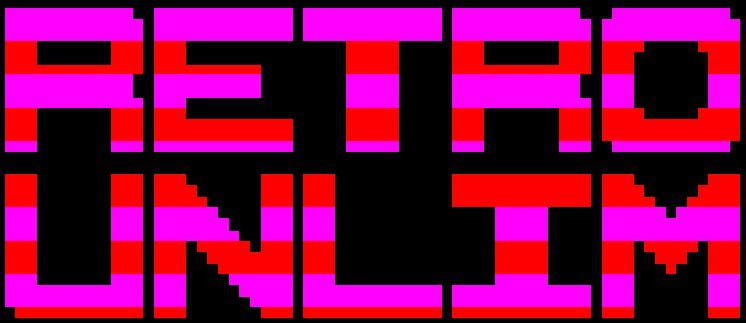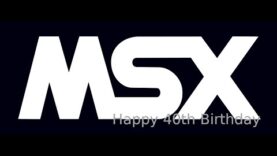Mark Plays…. AlphaRoid (MSX) – Happy 40th Birthday MSX (June 27th 2023)
Lactobacillus Prime
#MSX #40thbirthday #shmup
Today it’s the exact forty-year anniversary since the MSX standard came into existence. On June 27, 1983, the standard was announced during a press conference by a consortium of Japanese companies, including Sony, Canon, Panasonic, and Yamaha, in collaboration with Microsoft and ASCII Corporation. Later that year, the first compatible machines were released, and other manufacturers, such as Philips, joined the initiative.
The companies behind the MSX standard promised full hardware and software compatibility for all computers. At that time, this was unique because most computer standards were closed systems, such as the Commodore 64, Apple II, and Atari 400/800. The standard was conceived by Kazuhiko Nishi of the Japanese ASCII Corporation and Microsoft.
The hardware of the MSX standard was inspired by the Spectravideo SV-318 and SV-328 computers, which were released in June 1983. The standard utilized affordable chips that were widely available, such as the Zilog Z80A processor, the Texas Instruments TMS9918 graphics chip, providing a resolution of 256×192 pixels with 16 colors, a Yamaha YM2149 sound chip, also known as AY-3-8910, and 16 to 64kB of RAM. The machines featured a fairly extensive version of Basic, created by Microsoft, and for floppy disks, there was MSX-DOS, a variant of MS-DOS and CP/M. The machines could be expanded through two cartridge slots, for which various peripherals were developed, including modems and external drives.
In hindsight, the timing of the introduction was not ideal. With a few exceptions, most MSX computers didn’t appear until 1984, when the home computer crisis was reaching its peak. That tumultuous time was characterized by intense competition, an oversupply of various computer systems, and significant price reductions. It proved challenging to gain market share in the United Kingdom and the United States, leading to many computers being dumped in other markets. Particularly in the Netherlands, Spain, Brazil, and South Korea, the MSX machines gained popularity.
In 1985, the MSX2 standard was introduced, bringing significant improvements. It featured the Yamaha V9938 graphics chip, which offered a higher resolution and increased color capabilities (256×212 pixels with 256 colors and 512×212 pixels with 16 out of 512 colors). Support for an optional YM2413 FM synthesizer chip (OPLL) was also added. Many later MSX2 machines were equipped with a 3.5″ 720kB floppy disk drive. During that time, the first 16-bit computers independent of the IBM PC emerged, such as the Commodore Amiga and Atari ST, surpassing the hardware capabilities of the MSX2.
While awaiting the release of MSX3, the MSX2+ was introduced in 1988, exclusively available in Japan from Sony, Panasonic, and Sanyo. It featured the Yamaha V9958 graphics chip, supporting 19,268 colors and hardware-based scrolling, as well as OPLL audio and MSX Music (YM2413). In 1990 and 1991, Panasonic released the last two MSX machines under the name Turbo R. These models were equipped with an R800 16-bit chip alongside the Z80, operating at a clock frequency of 14.32MHz and offering 256 to 512kB of RAM. Meanwhile, the IBM PC had gained increasing popularity, partly due to affordable clones. This system also featured an open hardware architecture, expandability through expansion cards, and a wide range of software. The x86 system eventually became the global standard, with the exception of Apple Macintosh.
The production of Turbo R was definitively discontinued in 1993, but that wasn’t quite the end of MSX. In the following years, the Moonsound OPL4 sound card and Sunrise GFX9000 graphics card were released. The latter featured the Yamaha V9990 graphics chip, which was based on the unreleased V9978 that was supposed to be included in MSX3 but wasn’t completed in time. In 2005, the One-Chip-MSX was introduced—a small computer housing a complete MSX system within a single FPGA chip, allowing easy usage of MSX software with modern peripherals such as an external keyboard and SD card. To this day, new MSX software and occasionally hardware are still being released for an enthusiastic community of retro enthusiasts.
It is estimated that a total of nine million MSX computers were sold worldwide, manufactured by 22 different companies.
Thanks for watching – LactobacillusPrime
Source: Tweakers.net
My Twitter:
My Facebook:
https://www.facebook.com/LactobacillusPrimeRetroGaming
My Instagram:
https://www.instagram.com/lactobacillus_prime
NOTICE:
“Copyright Disclaimer Under Section 107 of the Copyright Act 1976, allowance is made for “fair use” for purposes such as criticism, comment, news reporting, teaching, scholarship, and research. Fair use is a use permitted by copyright statute that might otherwise be infringing. Non-profit, educational or personal use tips the balance in favor of fair use.”







 Top Racing Games
Top Racing Games






